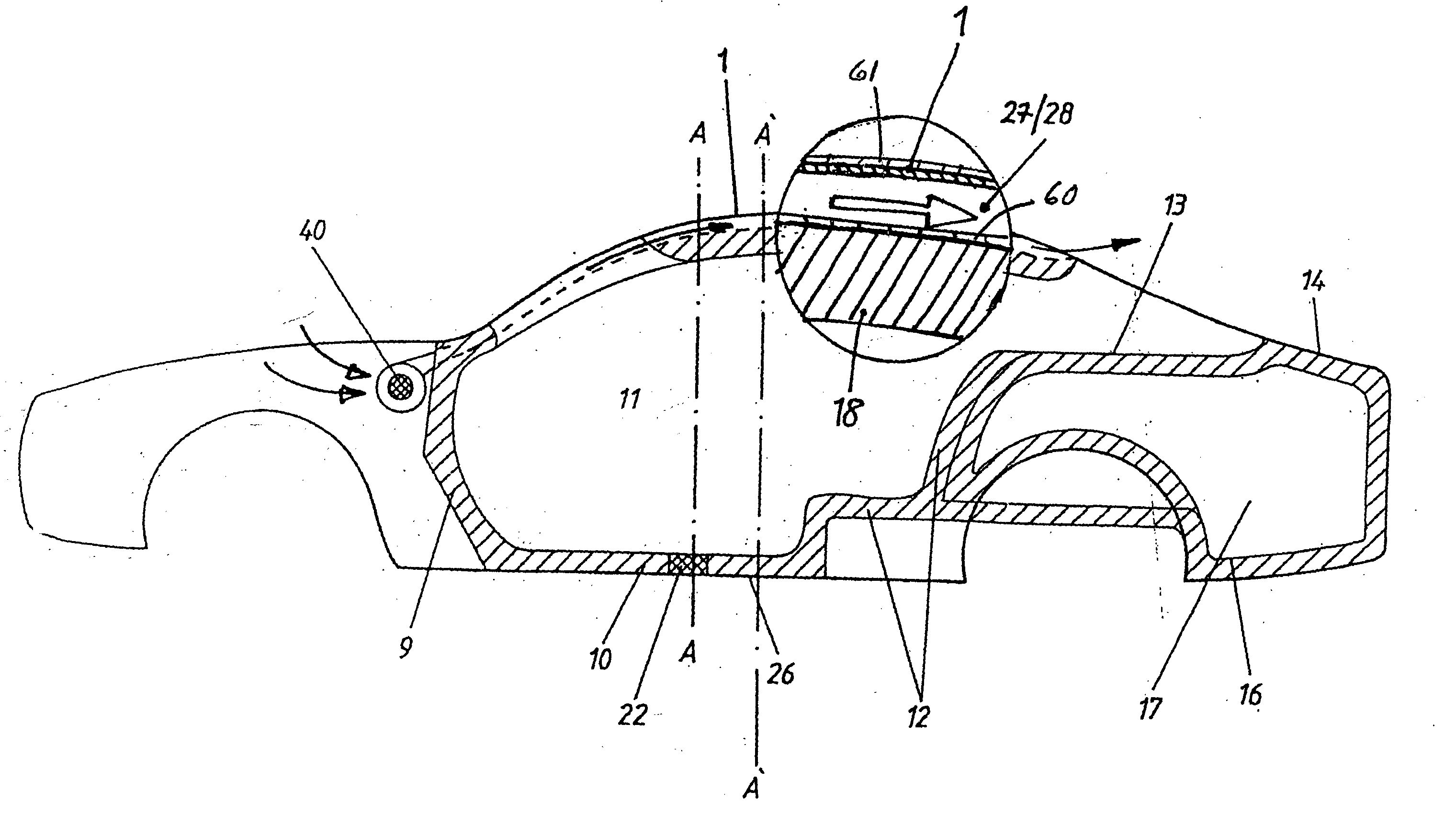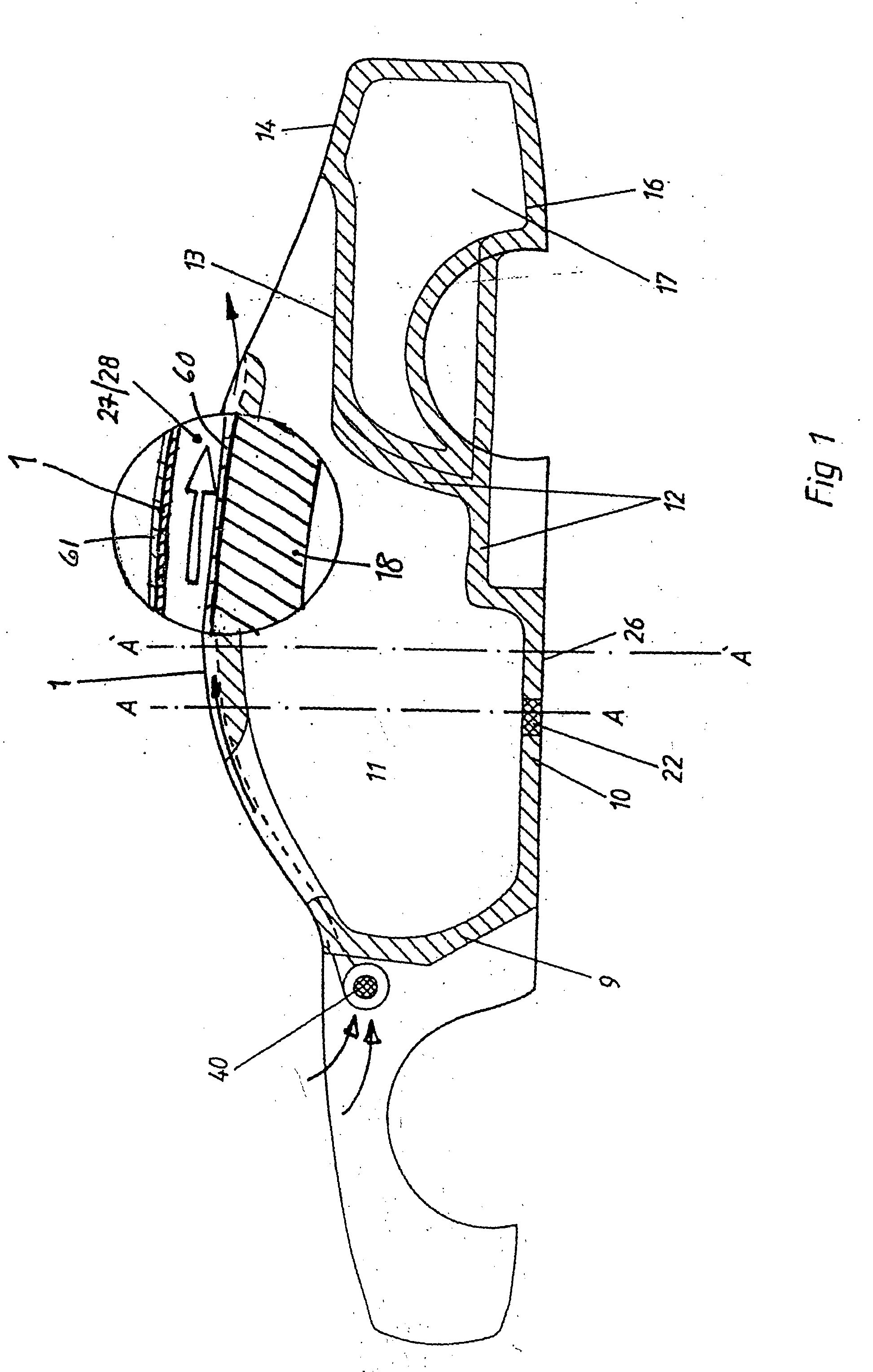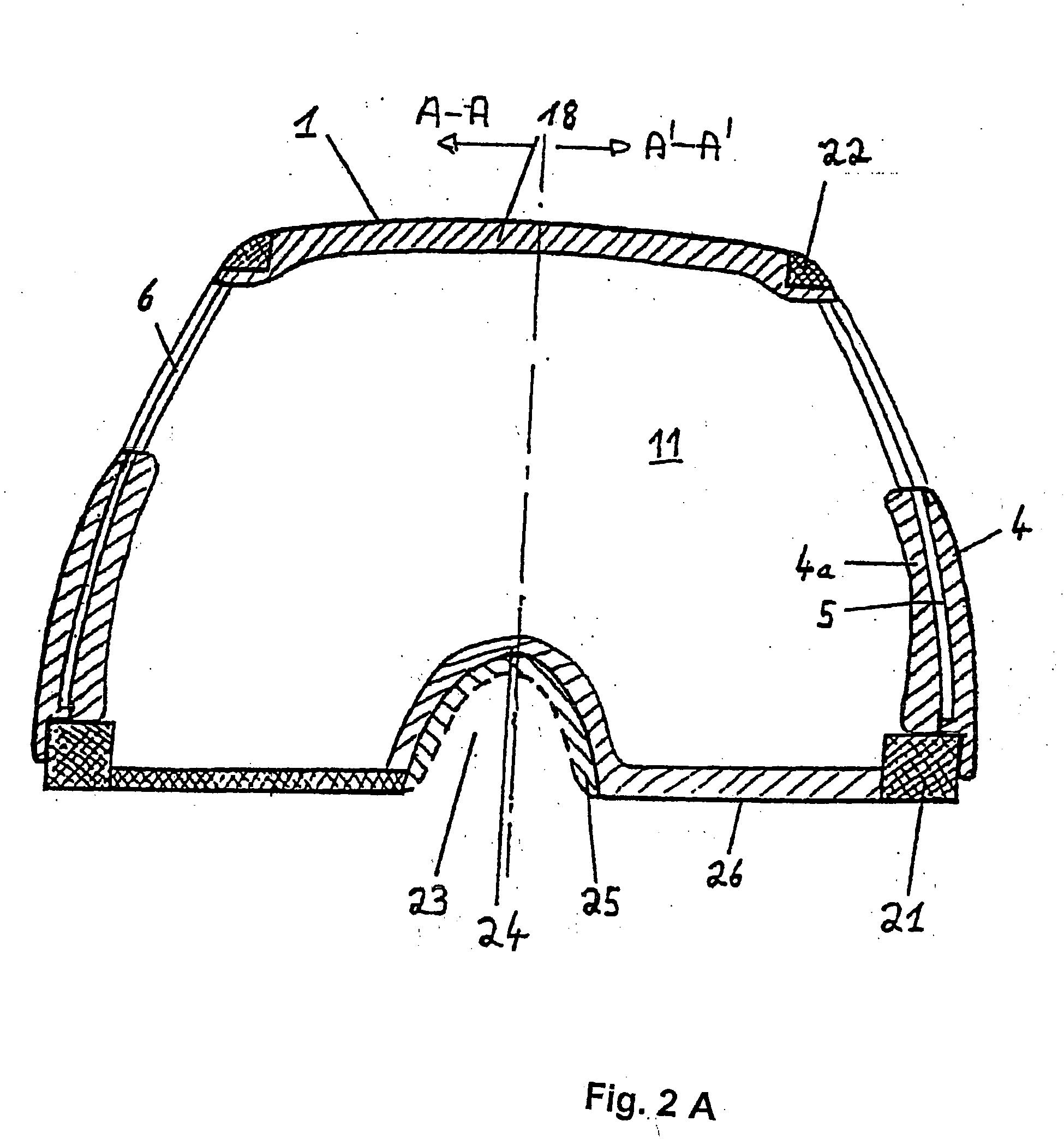Motor vehicle passenger compartment heat insulation and dissipation
a technology for passenger compartments and motor vehicles, applied in the field of motor vehicle industry, can solve the problems that the ideal heat exchange system does not give heat an opportunity, and achieve the effect of reducing pollution emissions and reducing energy consumption
- Summary
- Abstract
- Description
- Claims
- Application Information
AI Technical Summary
Benefits of technology
Problems solved by technology
Method used
Image
Examples
Embodiment Construction
[0052] By their nature, thermal insulation bodies alone cannot lower the inside temperature of a vehicle below the outside temperature. Instead, the temperature in the passenger compartment will always be 2 to 5° C. above the outside temperature. If the outside temperature is, e.g., 20° C., the inside temperature of 22 to 25° C. will be within the “comfort range”. If the outside temperature is 30° C. on the other hand, a temperature of 32 to 35° C. will develop in a standing vehicle. As compared to non-thermally insulated vehicles, in which up to 70° C. will be reached in the standing vehicle, this is already significant progress. However this is not sufficient by today's standards. The layer thicknesses of insulation bodies are limited in vehicle construction for reasons of design. It is impractical to lower the inside temperatures to be within the “comfort range” in hot weather simply by selecting the thickness of the insulation bodies alone. Only the set of complementary measures...
PUM
 Login to View More
Login to View More Abstract
Description
Claims
Application Information
 Login to View More
Login to View More - R&D
- Intellectual Property
- Life Sciences
- Materials
- Tech Scout
- Unparalleled Data Quality
- Higher Quality Content
- 60% Fewer Hallucinations
Browse by: Latest US Patents, China's latest patents, Technical Efficacy Thesaurus, Application Domain, Technology Topic, Popular Technical Reports.
© 2025 PatSnap. All rights reserved.Legal|Privacy policy|Modern Slavery Act Transparency Statement|Sitemap|About US| Contact US: help@patsnap.com



